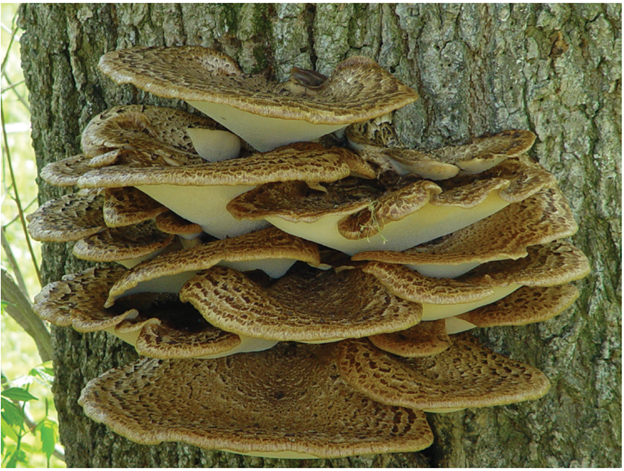Last updated: October 25, 2024
Article
Springing Up — Dryad’s Saddle
By John Paul Schmit

NPS
The upper surface of dryad’s saddle is a brownish color and is typically covered in large dark-brown to black scales. The pattern is somewhat similar to the coloration of a pheasant—which is why this fungus is sometimes also called pheasant’s back. A dryad is a mythological tree nymph. The name dryad’s saddle comes from the sometimes saddle-shaped cap of the fungus—depressed in the middle and rising towards the edge. The underside of this fungus is white and composed of numerous small pores where spores are produced. The pores are found all down the stem except for the very bottom where it is smooth and black. The fungus will grow in a mushroom shape from downed wood or as shelves coming out of standing dead wood.

NPS
This material was originally published in a newsletter in 2011, and was republished in an online format in 2024.
Tags
- antietam national battlefield
- catoctin mountain park
- chesapeake & ohio canal national historical park
- george washington memorial parkway
- harpers ferry national historical park
- manassas national battlefield park
- monocacy national battlefield
- national capital parks-east
- prince william forest park
- rock creek park
- wolf trap national park for the performing arts
- mushrooms
- ncrn
- ncrn im
- im
- dryads saddle
- fungus
- fungi
- forests
- polyporus squamosus
- nature
- natural resource quarterly
